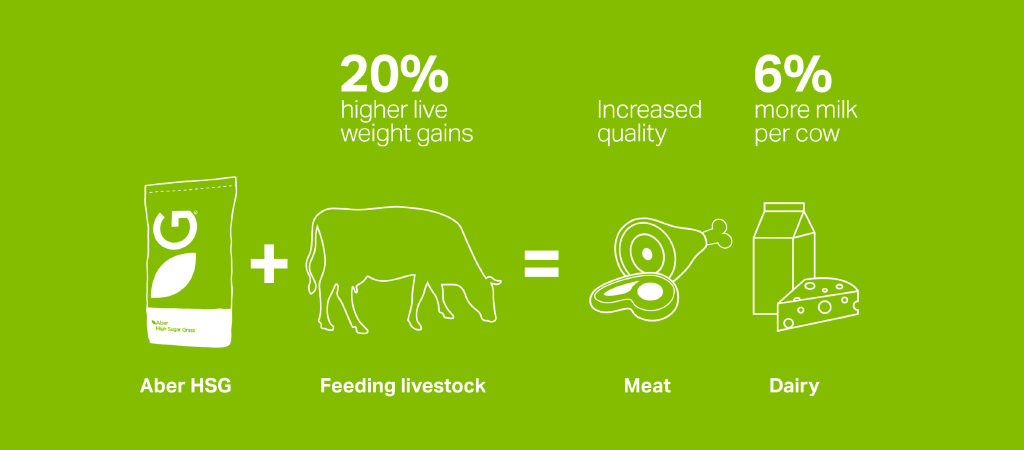The efficient use of protein in the diet brings production and environmental gains says Germinal grass and forage expert William Fleming, with regular reseeding an important step towards improving protein use.
Pasture-based ruminant livestock farmers are aiming for the right balance of energy and protein in their grassland to produce as much meat and milk as possible.
Supplying balanced nutrition helps protein to be used in the rumen, reducing wastage and emissions of methane, ammonia and nitrous oxide.
Where there’s an imbalance with too little available energy, the wasted protein results in a failure to meet both production and environmental targets.
Maintaining grass quality
Replacing older grass leys is one way to maintain the balance of nutrients in your grassland and there’s still time to reseed this autumn, particularly now we’ve had rain in most areas.
Choose grass seed varieties with the highest metabolisable energy (ME) yields/ha to gain the best energy output. These are found in the recommended grass and clover lists (RGCL) for England and Wales, with a separate list for Scotland.
Even small increases in ME result in production benefits through increased milk yields and liveweight gains.
Germinal’s Aber High Sugar Grass (HSG) varieties are highly rated for their ME yield due, in part, to their higher levels of water-soluble carbohydrates (sugars). This readily available energy source is used quickly and efficiently by rumen microbes enabling more of the protein to be used to produce meat and milk.
Losses are reduced too. Zero-grazing trials involving dairy cows in all stages of lactation have shown urinary losses of feed nitrogen reduced by up to 24% in animals fed Aber HSG mixtures.
 Homegrown forage benefits
Homegrown forage benefits
High-value forage is the basis of efficient and sustainable production. The upfront monetary cost of reseeding must be weighed up against the financial and environmental benefits of producing forage on-farm and reducing the need for bought-in protein.
Keeping an emphasis on quality rather than quantity is the most successful strategy for developing the production potential of your grassland while balancing the demands of a reduced carbon footprint.
For more on increasing the quality of your grass, contact one of our grass and forage experts.

